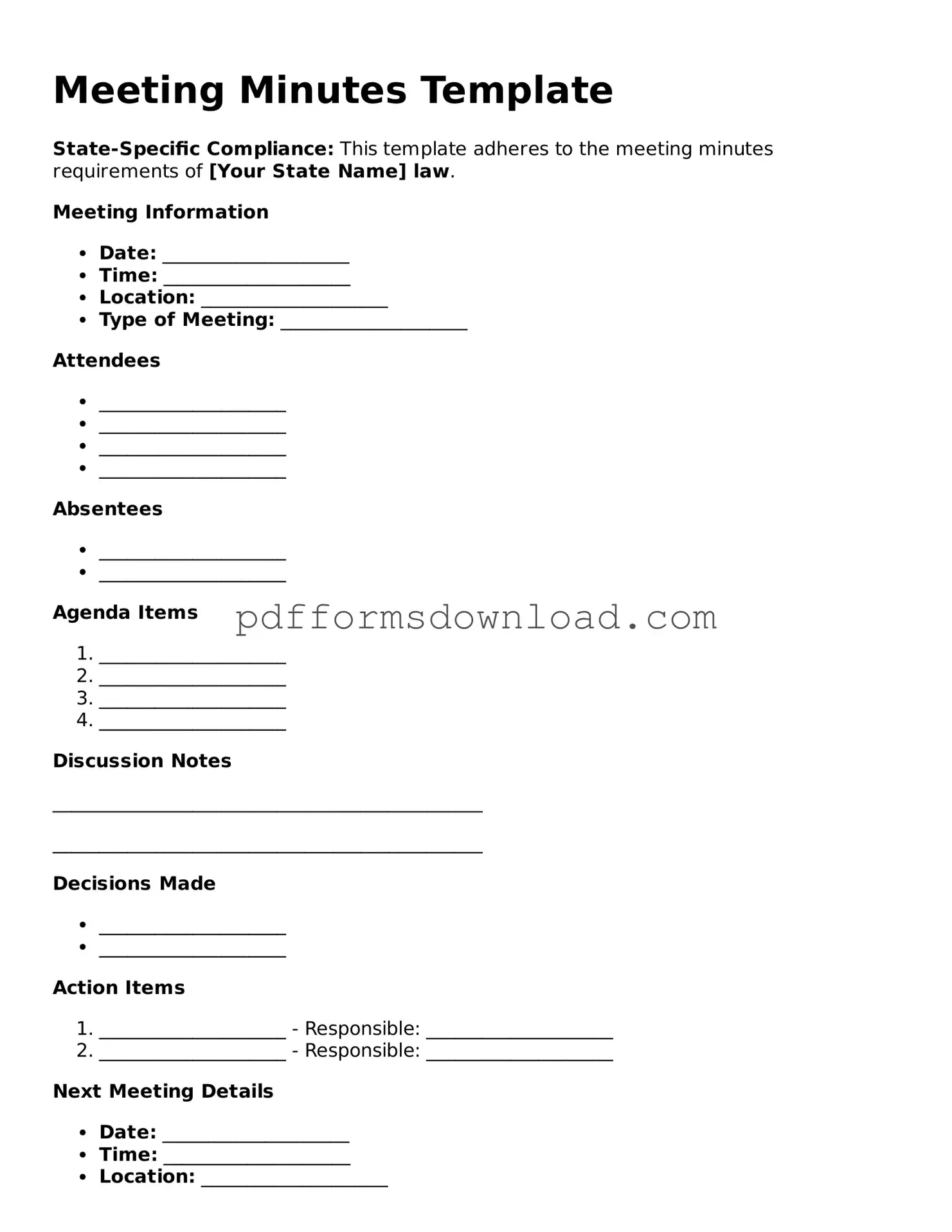What is the purpose of the Meeting Minutes form?
The Meeting Minutes form serves as an official record of what transpired during a meeting. It captures key discussions, decisions made, and action items assigned. This documentation is essential for ensuring accountability and providing a reference for participants and stakeholders who were unable to attend. By maintaining accurate meeting minutes, organizations can enhance communication and track progress on various initiatives.
Who is responsible for completing the Meeting Minutes form?
The responsibility for completing the Meeting Minutes form typically falls to the designated note-taker or secretary of the meeting. This individual should be attentive during discussions to accurately capture important points. In some cases, the meeting organizer may also take on this task. Regardless of who completes it, the minutes should be reviewed for accuracy before distribution to all attendees.
How should the Meeting Minutes be distributed after completion?
After the Meeting Minutes are finalized, they should be distributed promptly to all meeting participants. This can be done via email or shared through a collaborative platform. It's important to ensure that everyone receives the minutes, as this fosters transparency and keeps all stakeholders informed. In some organizations, minutes may also be archived for future reference.
Can the Meeting Minutes be amended after they are distributed?
Yes, the Meeting Minutes can be amended after distribution if inaccuracies are identified. Typically, any changes should be discussed with the meeting participants, especially if they impact decisions or action items. Once the amendments are agreed upon, a revised version should be circulated to ensure everyone has the most current information. This practice helps maintain clarity and trust among team members.
